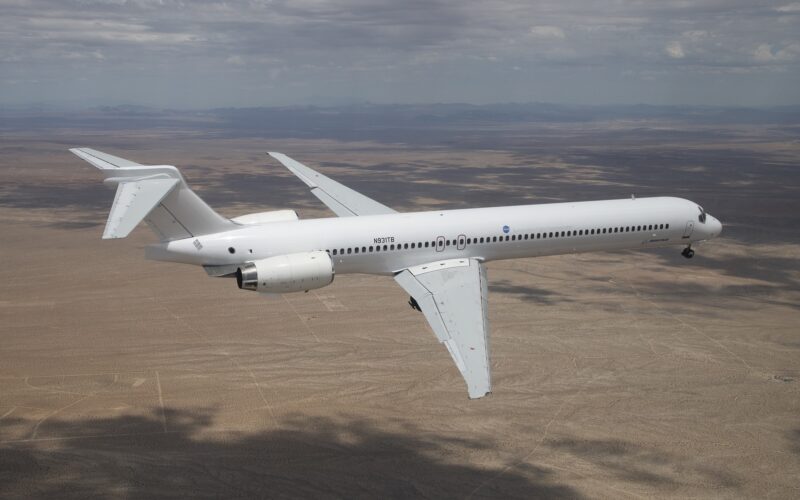Boeing Prepares MD-90 for NASA’s X-66A Transformation with Enlarged Wings

A McDonnell Douglas MD-90 has flown into Boeing’s base in Palmdale, United States (US), to undergo a hugely significant transformation that could mean airlines become less reliant on fuel.
The MD-90 arrived on August 17, 2023, where it will be modified to test the Transonic Truss-Braced Wing (TTBW) for NASA’s Sustainable Flight Demonstrator (SFD) project.
The aircraft, renamed as X-66A, will play a pivotal part in developing ways for the US to achieve its goal of net-zero aviation greenhouse gas emissions.
With ultrathin wings braced by struts with larger spans and higher-aspect ratios, the TTBW design and other expected technological advances could lead to reductions in fuel use and emissions by up to 30%.
“This marks an important step in the Sustainable Flight Demonstrator project, advances Boeing’s commitment to sustainability and brings us closer to testing and validating the TTBW design,” Boeing chief technology officer Todd Citron said.
Boeing and NASA have collaborated for more than a decade on the concept through the Subsonic Ultra Green Aircraft Research (SUGAR) Program.
Ed Waggoner, deputy associate administrator for programs in the NASA Aeronautics Research Mission Directorate, said: “We at NASA are excited to be working with Boeing on the X-66A Sustainable Flight Demonstrator making critical contributions to accelerate aviation towards its 2050 net-zero greenhouse gas emission goal.”
Boeing confirmed in a statement that modification will begin soon, and ground and flight testing is expected to commence in 2028.
On July 25, 2023, Boeing announced that Alaska Airlines, American Airlines, Delta Air Lines, Southwest Airlines and United Airlines would also contribute to the program.
The US carriers will provide input on operational efficiencies, maintenance, handling characteristics and airport compatibility.
At this year’s EAA AirVenture Oshkosh, Boeing and NASA unveiled the livery that the X-66A will display.
